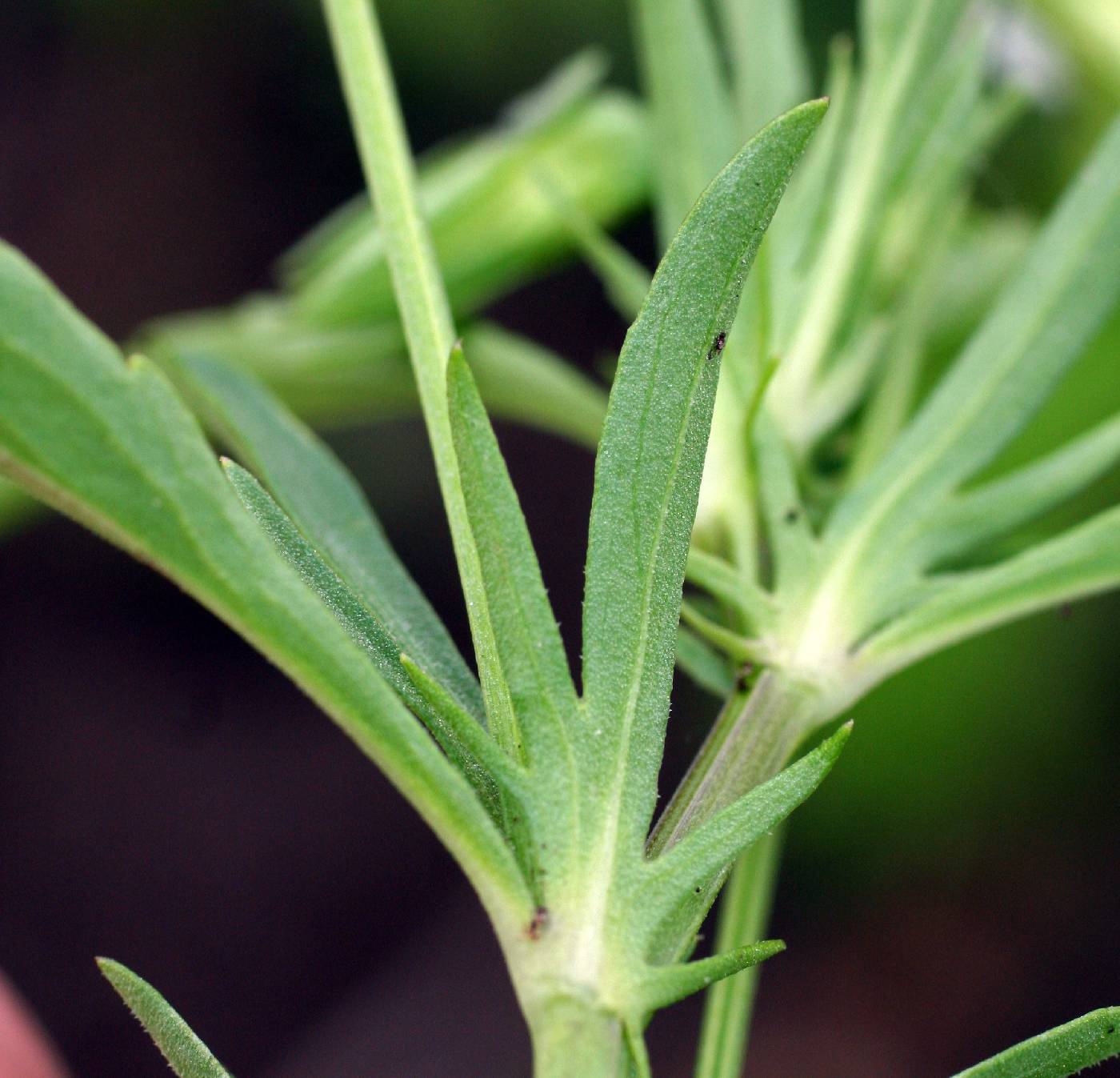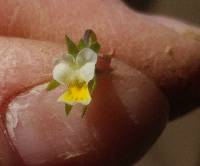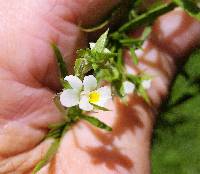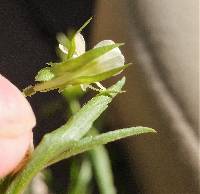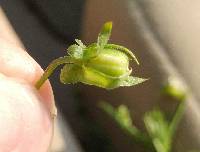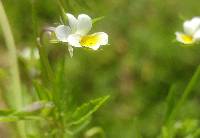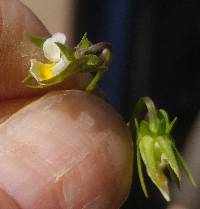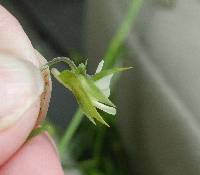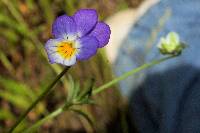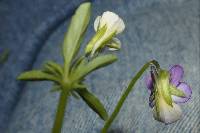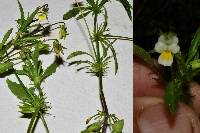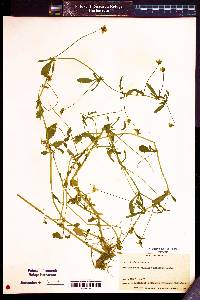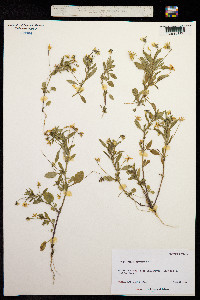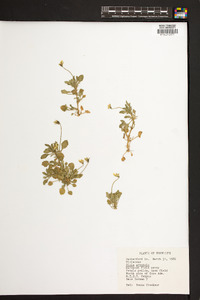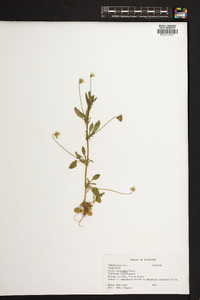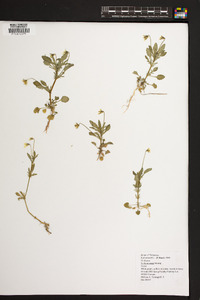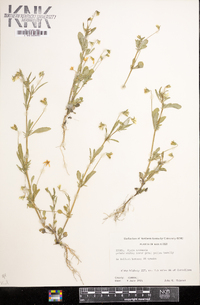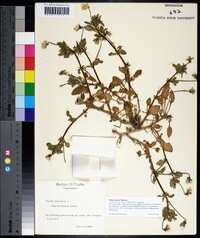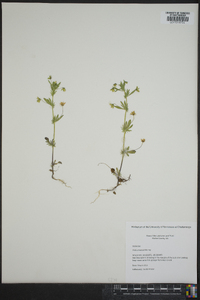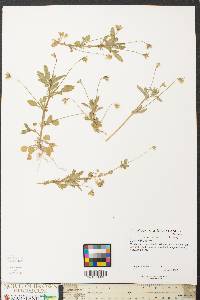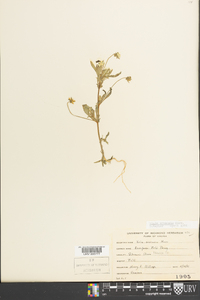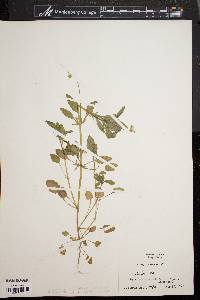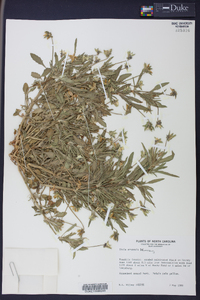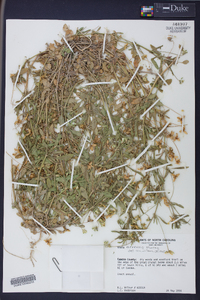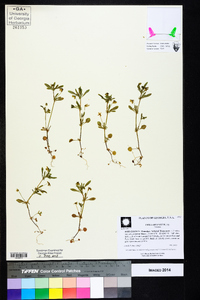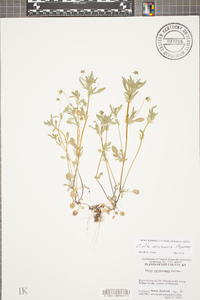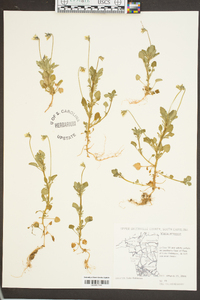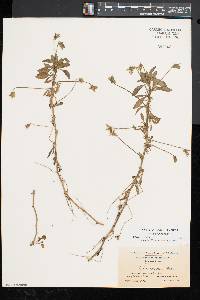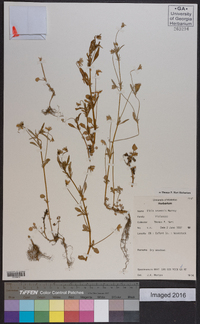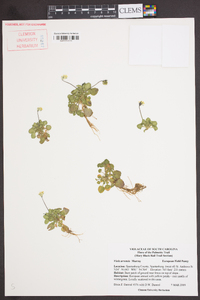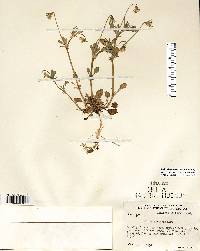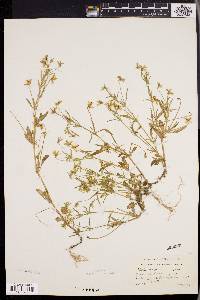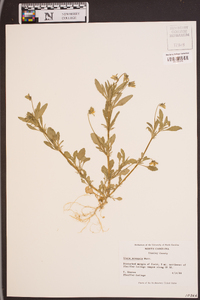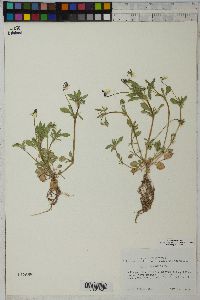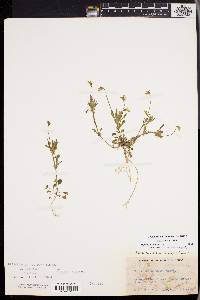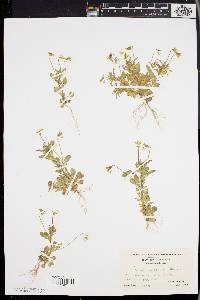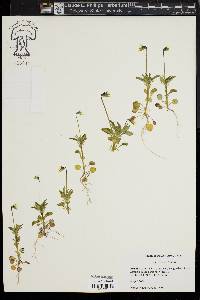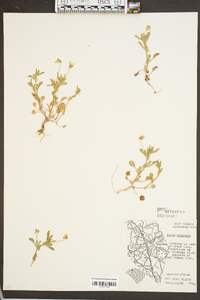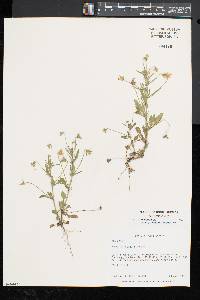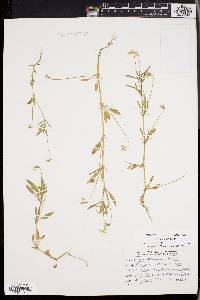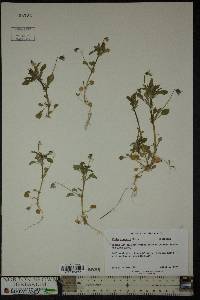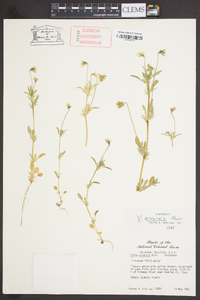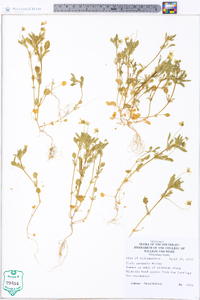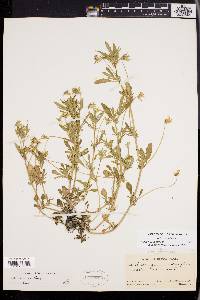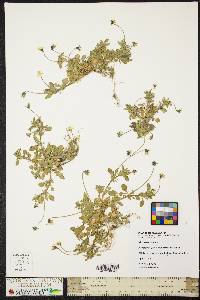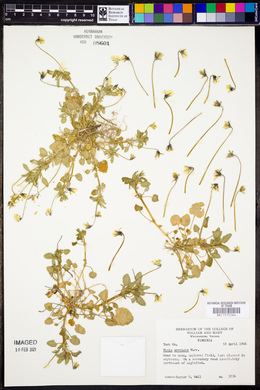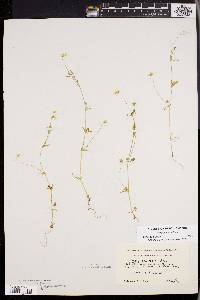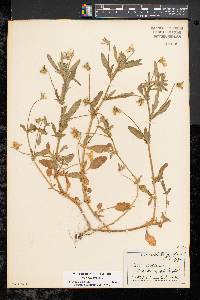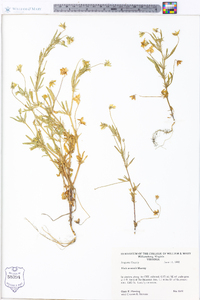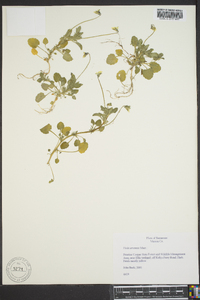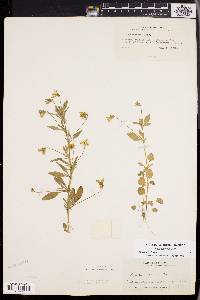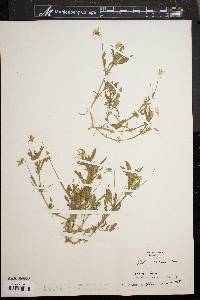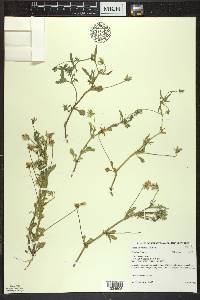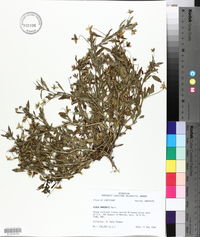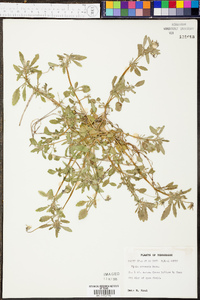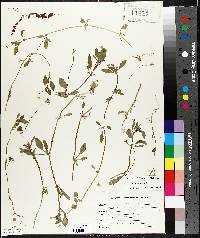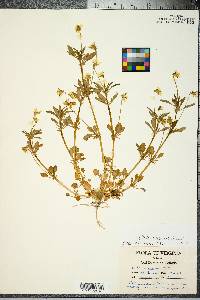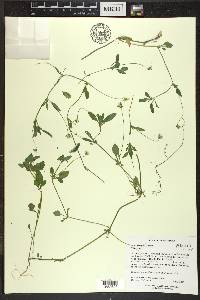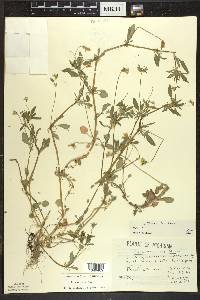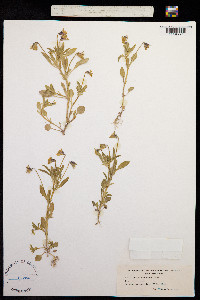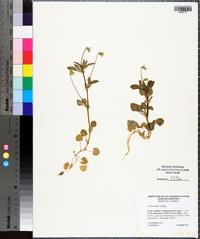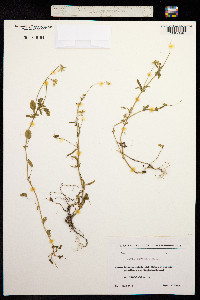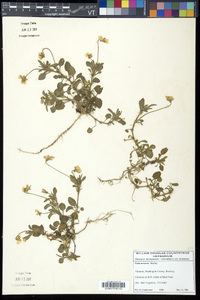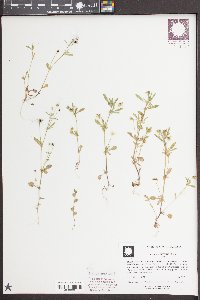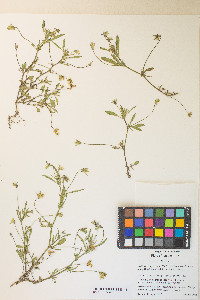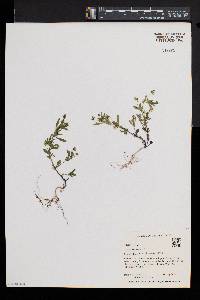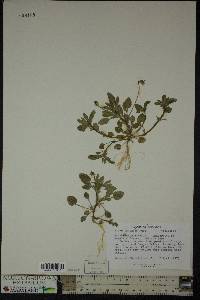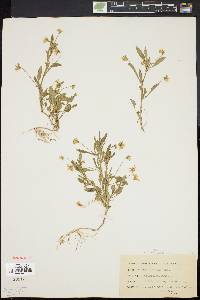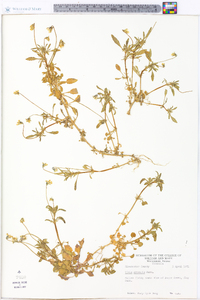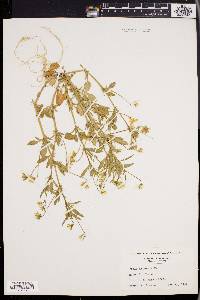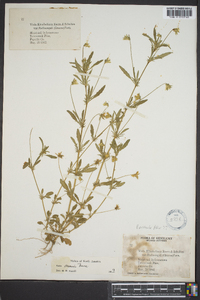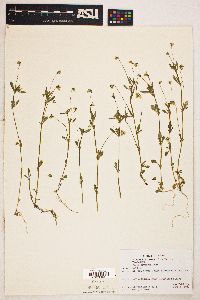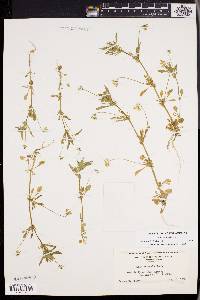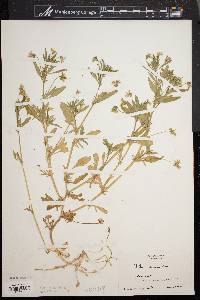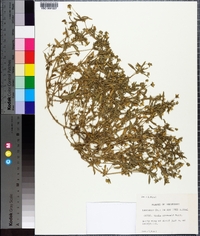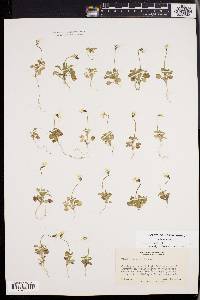
|
|
|
|
Family: Violaceae
European Field Pansy
[Viola tricolor var. arvensis (Murray) DC.] |
PLANT: Annuals 5‑42 cm tall. STEMS: prostrate to erect, much branched from base, glabrous to short strigose. LEAVES: simple, cauline, alternate, glabrous to pubescent; stipules 20‑39 mm long, palmately lobed, the middle lobe leaf‑like, oblanceolate to obovate, lanceolate, the lower lobes shorter, dissected, the margins ciliate; petioles 10‑20 mm long; lower blades 25‑36 mm long, orbicular to lanceolate, the margins crenate to subserrate; upper blades 15‑44 mm long, 3‑16 mm wide, narrowly lanceolate to ovate, the margins coarsely to regularly crenate-serrate. INFLORESCENCE: axillary, the pedicels to 8.5 cm long. FLOWERS: sepals to 15 mm long, with 2‑4 mm long ear‑like lobes at base; petals as long as, or usually shorter than sepals, mainly cream or tinged blue‑violet on the upper 4 petals, the lowest petal (including spur) 7‑15 mm long. FRUITS: 5‑9 mm long, glabrous. 2n = 34. NOTES: A weedy plant of waste areas and roadsides: Pima co. expected in others; 750 m (2400 ft); Mar‑Jun; native of Eur.; widespread in N. Amer. Cleistogamous flowers absent. Confused with V. rafinesquii; seldom collected. REFERENCES: Little, R. John. Violaceae. 2001. J. Ariz. - Nev. Acad. Sci. Volume 33(1). Annual herb 10 - 30 cm tall Stem: erect, often branched from the base, usually with short reflexed hairs at least on stem angles, and producing both leaves and flowers. Leaves: alternate to almost opposite, stalked, hairy or almost hairless, round-toothed, and small (1 - 4 cm long). All the leaves have tapering bases, but otherwise are quite variable in shape with the lowest leaves being rounded to egg-shaped, and the upper leaves oblong to elliptic and sometimes quite narrow. Stipules large, almost leafy, 2 - 3 cm long, deeply lobed near base into five to nine slender segments and one large terminal segment nearly as large as leaf blade. Flowers: in upper leaf axils, long-stalked, pale creamy yellow, small (0.5 - 1.5 cm long and scarcely 1 cm wide), bilaterally symmetric with two upper petals, two lateral petals, and lower petal with base modified into a short, rounded nectar spur. Sepals: five, green, conspicuous (as long or longer than petals), broadly lance-shaped with ear-like appendages (auricles) at the base. Petals: five, separate, all differently shaped, about equaling sepals (never more than 2 mm longer), pale creamy yellow, sometimes lateral two and upper two with pale purplish stripes or shading near base. The lowest petal is prolonged at its base into a very short, rounded spur or sac. Stamens: five, separate, but very tightly arranged so anthers touch as they surround ovary. The filaments are very short, and the lower two stamens have spur-like nectaries on their backs that extend into the spur or sac of the lower petal. Pistil: with a single-chambered, superior ovary; a single style that greatly enlarges near the tip; and a globose, hollow stigma with a wide opening on the lower side. Fruit: a many-seeded, 0.5 - 1 cm long, globose to ellipsoid capsule that opens lengthwise from top. The seeds are brown and have a large amount of oily endosperm, and often an appendage (aril). Similar species: Viola arvensis may be confused with V. rafinesquii (also known as V. bicolor) due to its small flowers, but in that species the petals are much longer than the sepals, and the flower is pale blue with a pale yellow center. Also similar is V. tricolor, but that species has larger flowers with all petals evidently longer than the sepals, and the upper pair of petals are dark blue or purple from the middle to the tips. Some confusion may occur with V. striata, but the stipules of that species are quite smaller and only fringed with thread-like segments instead of long lobes, further the flowers are typically more showy and well over 1 cm long. Flowering: late April to July Habitat and ecology: Infrequent, often in sandy soil, usually on sandy roadsides or sandy cultivated fields. Occurence in the Chicago region: non-native Notes: This species was introduced from Eurasia. It appears to be able to hybridize with the much more attractive and showy V. tricolor. Etymology: Viola is the classical name for the genus. Arvensis means "of farmed or cultivated land". Author: The Field Museum Pubescent to glabrate annual to 30 cm, often branched from the base, the stem relatively robust, with short, reflexed hairs on the angles; lvs variable, the lowest orbicular to ovate, the upper oblong to elliptic or narrowly elliptic, all crenate; stipules foliaceous, laciniate into 5-9 slender segments and usually 1 lf-like segment often nearly as large as the main blade; fls 1-1.5 cm long, scarcely 1 cm wide; pet shorter than or barely equaling the broadly lanceolate sep, all pale yellow ("ivory") or occasionally with purplish tips; spur short; style as in no. 27 [Viola rafinesquii Greene]; cleistogamous fls wanting; frs globose to ellipsoid, 5-10 mm; seeds brown; 2n=34. Native of Europe, now established as a weed in or near fields or along roadsides throughout our range and s. and w. Apr.-Sept. Gleason, Henry A. & Cronquist, Arthur J. 1991. Manual of vascular plants of northeastern United States and adjacent Canada. lxxv + 910 pp. ©The New York Botanical Garden. All rights reserved. Used by permission. From Flora of Indiana (1940) by Charles C. Deam This species was reported by Nieuwland as maintaining itself in St. Joseph County. In 1916 I found about a ten-acre field of it in Lagrange County. At first I thought the owner was growing this species for its seed but I learned that he had sown clover seed and that this species was so abundant that it had practically crowded out the clover. This place was revisited in 1930 and I found that it had disappeared. …… Indiana Coefficient of Conservatism: C = null, non-native Wetland Indicator Status: N/A Diagnotic Traits: plants with aerial stems; stipules fringed with several linear segments on each side, the terminal lobe much longer and wider than the lateral ones; corolla white or pale cream with yellow throat; petals shorter than to about as long as the sepals. |
|
|
|

